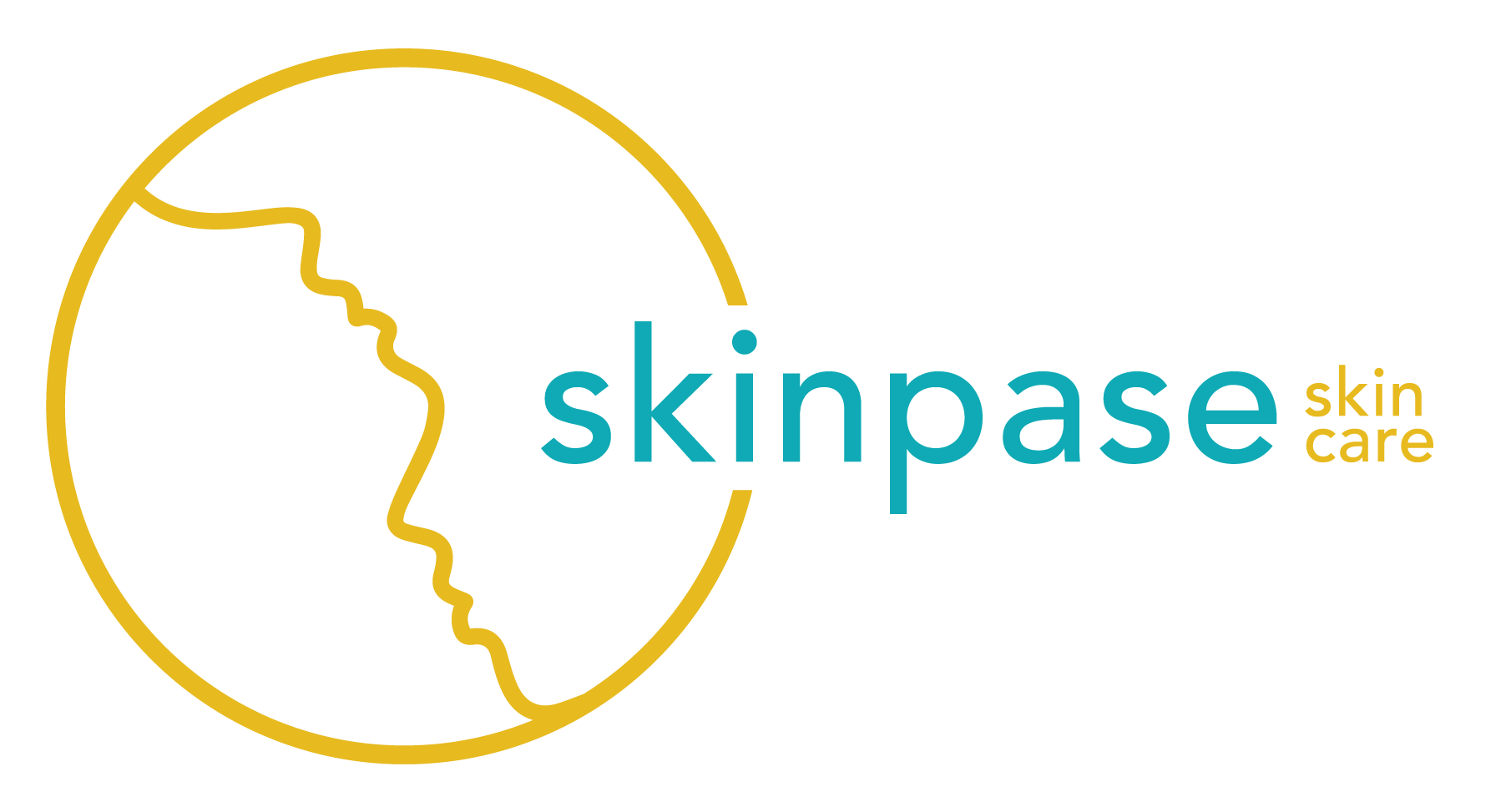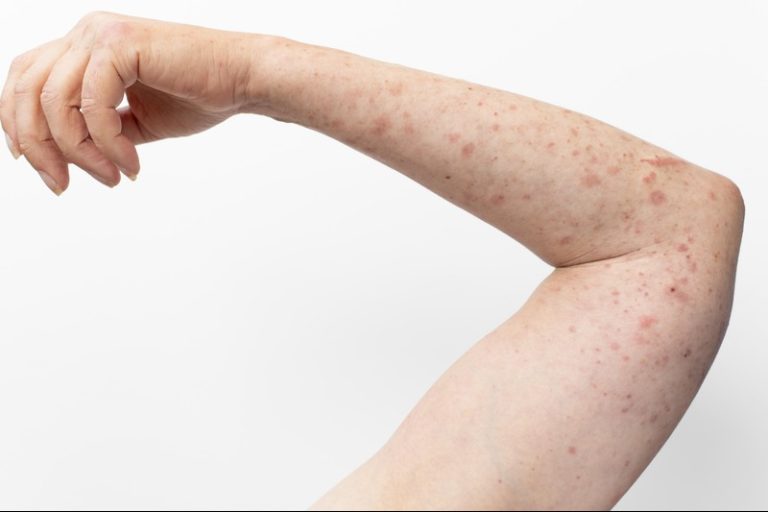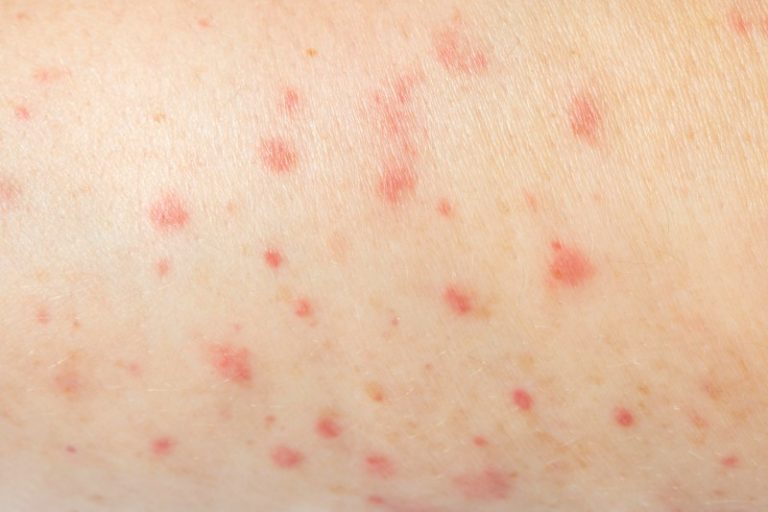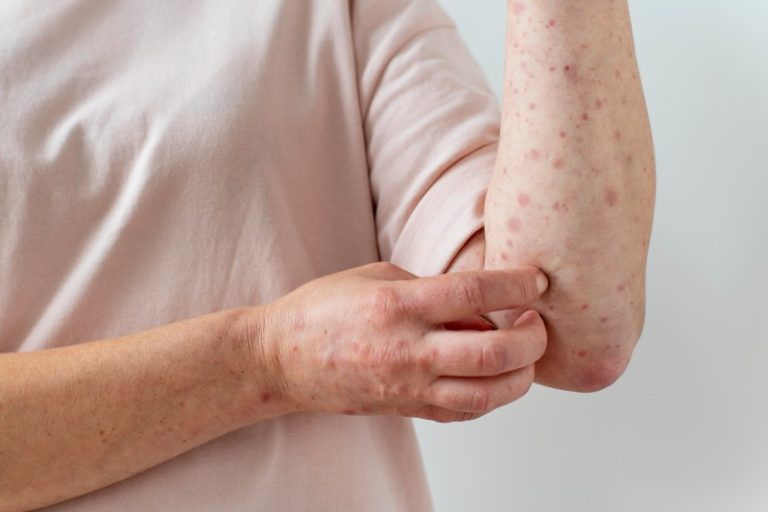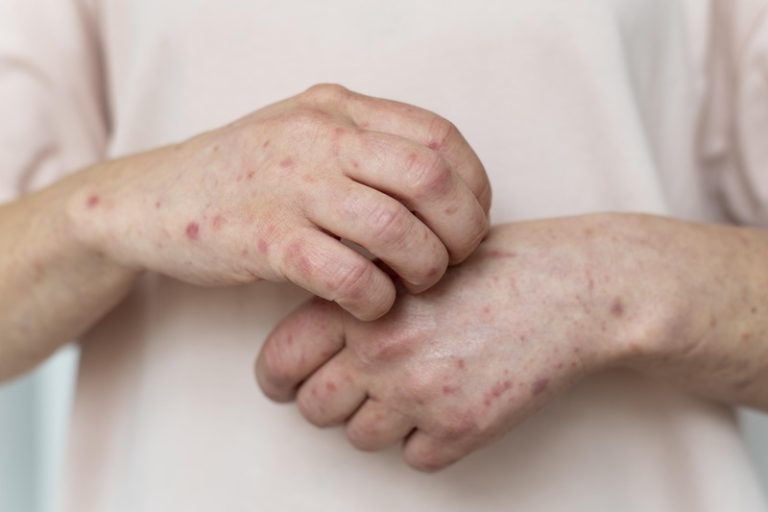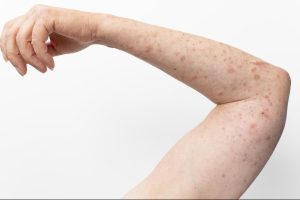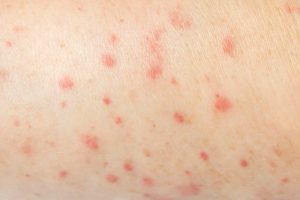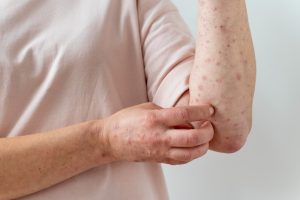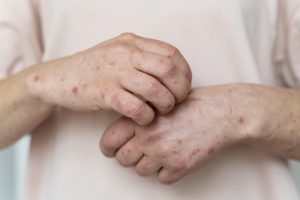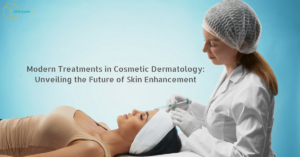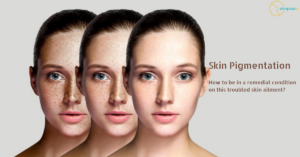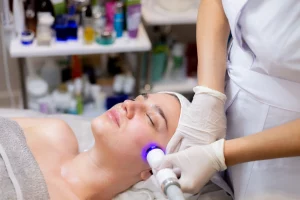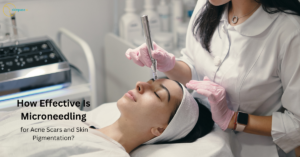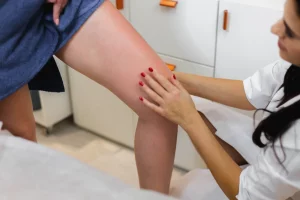Skin Allergy Treatment at Skinpase Clinic
What Are Skin Allergies?
An allergic reaction occurs when the body comes into contact with a foreign material often known as an allergens that is typically safe. Skin allergies can affect any part of the body, including the face, arms, and legs. The degree of the symptoms’ intensity can range from minor to serious. They come in a variety of forms, such as eczema, rashes, contact dermatitis, hives, and angioedema. Skin allergies can be triggered by different allergens, including hair dyes, lotions, soaps, and other products. It can take anything from a few hours to 10 days for symptoms to appear in an allergic reaction, which frequently involves several skin encounters with the allergen.
What causes skin allergies?
When the skin gets in touch with a foreign substance, it misinterprets that situation as being attacked, thereby causing skin allergy. The immune system subsequently releases chemicals and antibodies to assist in battling the “invader.” This series of events triggers an allergic reaction in the skin’s afflicted areas, often resulting in red, itchy, and inflamed skin.
Types of Skin Allergies
Eczema (Atopic dermatitis)
It is a recurring skin condition that has been connected to an hyperactive immune system. This condition can appear anywhere on the body, although it frequently appears in the elbow creases and behind the knees. Skin dryness, redness, itchiness, and a scaly rash are the typical signs seen in eczema. Skin darkening and crusting also appear as two other common symptoms. Depending on the disease’s severity and phase, eczema symptoms could vary. Eczema commonly fades away in younger children. To avoid sudden symptom flare-ups, eczema patients must maintain long-term control of their condition.
Different Stages of Eczema
Eczema progresses via numerous stages. The symptoms vary slightly at each stage and evolve over time as the illness worsens.
Acute stage: At first, eczema rash appears as little pimples filled with fluid (vesicles). When scratched, these lumps may leak or peel. The skin is likely to be especially itchy, red, and inflamed during this stage.
Subacute stage: The rash will begin to change as the skin starts to heal. Instead of seeming blistered, it will be dry, crusty, and scaly. At this point, the rashes also appears to be less irritating.
Chronic stage: Scratching an eczema rash leads the skin to become leathery and thick over time. This is referred to as lichenification. The skin can also turn into black (hyperpigmentation). Flares occur regularly at this stage and typically get worse over time.
Common Symptoms
Typically, eczema begins as an itch. A rash appears when the skin is scraped. Eczema’s most common signs and symptoms are:
- A red, itchy rash
- Dry, rough, or scaly skin
- Small, fluid-filled blisters
- Cracked or broken areas of skin
- Oozing, weeping, or crusting
Treatments Options
Infants and young children that have eczema display a different outward appearance from adults. It’s critical to be aware of what to look for as your infant or child grows because the area and characteristics of eczema evolve. Atopic dermatitis (also known as eczema) has no known cure, however there are medications that is helpful to control this widespread inflammatory skin condition. Therefore, in order to receive the proper care, it is crucial to visit a qualified dermatologist.
- Moisturisers
- Over-the-counter topical steroids
- Prescription medications
- Treatments that alleviate skin inflammation
- Specialist-driven procedures
Pregnancy Related Skin Allergies
Your skin, hair, and nails can undergo a number of changes when you are pregnant. The majority happen as a result of changes in hormone levels or particular stimuli. Rashes can arise anywhere on the body and, depending on the root cause, it can look or feel in different ways. Pregnant women and the developing foetus should both be treated with the utmost care and safety when addressing skin conditions with oral and topical treatments.
Common Diseases and Treatments
Pruritic urticarial papules and plaques of pregnancy
Pruritic urticaria papules and plaques of pregnancy (PUPPP) is a rash that commonly appears in the third trimester of pregnancy. PUPPP affects 1 in 130 to 300 individuals. It may begin as red, itchy patches on the stomach, particularly close to stretch marks, and then spread to the buttocks, arms, and legs.
Topical corticosteroids, oral antihistamine, and oral prednisolone are among the treatments for PUPPP.
Prurigo of pregnancy
Any trimester—first, second, or third—can have pregnancy prurigo. One in 300 people may develop this rash after giving birth, and it could last for a few weeks to many months. You could notice lumps that sting or are crusty on the arms, legs, or belly.
Pregnancy-related prurigo is treated with topical steroids and oral antihistamines. Moisturizers could be helpful as well.
Intrahepatic cholestasis of pregnancy
Pregnancy-related intrahepatic cholestasis is most frequently observed in the third trimester. It is a symptom of hormone-induced liver damage. Approximately 1 out of every 146 to 1,293 pregnant people may have cholestasis.
Even though a rash isn’t always present, itching can be very bad all over the body, although it tends to be worst on the palms of hands and the foot soles. Ursodiol is a drug that can help lower the level of bile in your blood and treat cholestasis.
Pemphigoid gestationis
Pemphigoid gestationis is an autoimmune condition, where it causes a woman’s immune system to attack a particular area of her own skin. Although it more frequently happens during the third trimester, it can theoretically appear during any of the other two trimesters or even after birth. In mild conditions, topical steroids are utilised, however systemic corticosteroids are required in more severe cases.
Impetigo herpetiformis
Pustular psoriasis, more precisely impetigo herpetiformis, often appears in the second half of pregnancy. The rash can arise anywhere on the body and can be quite red, inflammatory, and crusty. Prednisone and other corticosteroids are used in the treatment of infected lesions.
Pruritic folliculitis of pregnancy
Lesions on the torso are where pruritic folliculitis starts, although it can migrate to other areas of the body. The lesions may mimic acne because they are pus-filled. This rare disease typically lasts two to three weeks and manifests in the latter two thirds of pregnancy. Topical corticosteroids, ultraviolet B light therapy, or benzoyl peroxide are the different forms of treatment.
Those patients undergoing skin allergy treatments must avoid the allergens that triggers the allergic reaction.They must observe the advice of the doctor and shape a life style accordingly.
Frequently Asked Questions
What are some common conditions that requires skin allergy treatments?
Skin allergy treatments are required for some of the subsequent conditions:
1. Eczema: a skin condition that lasts a long time and causes redness, itchiness, and irritation.
2. Contact dermatitis: an hypersensitive reaction that takes place whilst a specific substance, like nickel or poison ivy, is carried out to the skin.
3. Hives: bumps on the skin which can be itchy and raised, and that they may be brought on by means of allergic reactions or other matters.
4. Allergic dermatitis: a pores and skin irritation brought on by using an hypersensitivity to latex, fragrances, or different materials.
5. Rosacea: a skin circumstance that lasts for a long time and causes redness, swelling, and small, crimson, pus-filled bumps on the face.
6. Urticaria: a circumstance that causes repeating hives that keep going for over about a month and a 1/2.
How do doctors diagnose a skin allergy?
To diagnose skin allergy, a medical doctor may perform a combination of the subsequent assessments:
- Physical examination: Redness, itching, infection, or raised bumps are all indications of an hypersensitivity, and the doctor will observe the affected place of the pores and skin.
- Medical records: The physician will ask approximately the patient’s scientific records and symptoms, which include whilst the reaction took place, any recent modifications in diet or lifestyle, or any exposure to potential allergens.
- Skin prick test: Here, a small quantity of the suspected allergen is carried out to the pores and skin, and then the skin is pricked to allow the allergen in. Within 15-20 minutes, a small, itchy bump will seem if the affected person is allergic to the substance.
- Patch test: In the patch test, small amounts of various allergens are applied to the pores and skin, after which it is covered with patches. A response will arise if the patient is allergic to any of the materials after the patches are left on for forty eight to 72 hours.
- Blood test: The test will look at the degrees of specific antibodies inside the blood that are produced in response to an allergen.
Based on the effects of these assessments, the health practitioner can decide the unique allergen inflicting the response and expand a treatment plan tailor-made to the affected person’s needs.
What are the most effective skin allergy treatments?
The skin allergy remedies relies upon on the kind and severity of the hypersensitivity. Here are some remedies:
1.Topical corticosteroids: Steroid-containing creams, ointments, or lotions reduce irritation and itchiness inside the affected area.
2.Antihistamines: An allergy’s itching, swelling, and redness can be alleviated with these oral or topical medicines.
3.Immune-modulating pills: These medicines reduce the severity of the reaction by means of suppressing the immune machine’s reaction to the allergen.
4.Moisturizers: Moisturizers can ease itchy, dry pores and skin, hydrate it, and reduce the severity of skin reactions.
5.Immunotherapy: In a few cases, a health practitioner can also recommend it, which entails publicity to small amounts of the allergen to desensitize the immune machine over the years.
How long does it take for skin allergy treatments to work?
This can change depending on the hypersensitive reaction and what sort of treatment is used.Some remedies like Corticosteroid creams may additionally provide comfort within a few hours and at the same time immunomodulators, may take several weeks to show outcomes.
Are there any side effects associated with skin allergy treatments?
Yes, some skin allergy treatments may have facet consequences. Here are a few viable side results associated with usual skin allergy remedies:
- Topical corticosteroids: It causes skin thinning, stretch marks, and clean bruising.
- Antihistamines: It can cause drowsiness, dry mouth, and dizziness. Some antihistamines can also results blurred vision, constipation, and trouble urinating.
- Immune-modulating tablets: They might also trigger the chance of infections, consisting of viral infections and a few forms of cancer.
- Immunotherapy: It may additionally results in swelling, redness, and itching at the injection site Rarely, it can cause anaphylaxis, a intense allergic reaction.
Can skin allergies be prevented?
While it is not viable to prevent all pores and skin allergies, there are some steps that may be taken to reduce the danger of developing an hypersensitive reaction. Here are some points to save you skin allergic reactions:
1.Avoid regarded allergens
2.Wear protecting clothing
3.Use hypoallergenic products
4.Keep skin moisturized
5.Avoid intense temperatures:
6.Manage stress
Latest Blogs
Updated Blogs & News
In recent years, cosmetic dermatology has undergone a remarkable transformation, introducing a plethora of cutting-edge treatments.They have altered our approach...
Our skin is the largest organ on our body and it’s the first thing people notice of our health or...
Looking to achieve a more youthful and Healthy Skin? If yes, you should strongly consider Laser skin resurfacing. By eliminating...
Introduction The quest for perfect, radiant skin is an aspiration shared by many individuals round the world. Skin pigmentation problems...
The sun is a powerful force that can be both beneficial and dangerous to our health. Sunlight is...
Thread veins and varicose veins are two types of veins that can cause discomfort and embarrassment. Thread veins...

